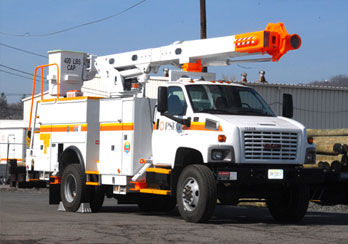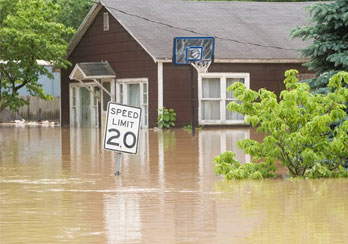What to Expect Once the Weather Has Cleared
Once severe weather passes, it's time for PSE&G to assess damage and make repairs. Questions about cleanup? We've got answers.
Prioritizing Power Restoration: Our Six-Step Process
When we determine that it is safe to start service restoration, our crews work around-the-clock to restore your power. When ice, lightning, rain, snow and/or wind storms cause major damage, we supplement our workforce with crews from other utilities and contract crews. You may see trucks from companies you don't recognize. Our goal? To restore power safely to the greatest number of customers in the shortest amount of time. We prioritize work as described below; we also work in all categories simultaneously where possible, because we have a workforce with different skillsets and equipment.
STEP ONE: Critical Public Safety
STEP TWO: High-Voltage Transmission and Substations
STEP THREE: Critical Infrastructure and Vital Public Services
STEP FOUR: Greatest Number of Customers
STEP FIVE: Neighborhoods/Areas Out
We repair damage on the branch lines, which branch off the main line and serve groups of homes and/or businesses. We prioritize customers with life sustaining equipment.
STEP SIX: Individual Homes and Businesses
We continue to work 24/7 to restore power to individual homes and businesses until the power's back for everyone.
We’re working in your neighborhood
Restoration Challenges
Large storms, like hurricanes, often impact the tri-state area and beyond, which increases the challenge of restoring power. Affected neighboring communities won't have the resources to spare, so we partner with contractors and other utility companies who may need to travel from great distances to help.
Other challenges that contribute to complex restoration include but are not limited to:
- High winds that prevent the use of bucket trucks.
- Travel difficulties, such as snow, ice, flooding and blocked roads.
- Limited access to rear property poles.
- Debris from trees or other vegetation and objects that must be cleared before power restoration can start.
- Lack of information about outages that are not reported by customers.
- Large equipment that must be brought in manually.
- Making adjustments so that crews working 16-hour shifts remain safe.
Why It’s Important to Report your Outage
It is extremely important for customers to notify PSE&G that you are experiencing an outage. If you do not notify us, we may take longer to restore your power. Even if your neighbor has already reported an outage, we want to hear from you directly as our system assigns higher priority to large clusters of outages versus a single outage.
When the Lights Come On... and Go Off Again
Our electric distribution system is complex. Sometimes, after a major storm, crews make temporary repairs to restore your power. When crews return to make the permanent repairs, they may need to turn off the power again to ensure their own safety. Those outages are temporary, and we'll reestablish power when repairs are completed and it's safe to do so.
Nested Outages
Have you ever received notice from us that your power has been restored when your power was still out? That’s because our crews restored the whole neighborhood, but your house is experiencing what we call a ‘nested outage.’ A nested outage is a more localized issue, which means there is likely equipment failure right at your house -- whether it be a blown fuse or a tree hanging on your home’s direct power line. We are not aware of all nested outages, so it is important that you respond to us saying that your power is still out.
Who's Responsible for What?
When your home, property or equipment sustains electrical damage from a storm, who repairs or replaces it? When our crews must cut through brush and debris on your property to access and repair wires, who takes care of the clean-up?
- Electric service equipment: What’s Company Owned? What’s Customer Owned? Find out here.
- Tree/debris removal: If we must cut away trees/brush to restore power to your home, removing the tree and/or debris is your responsibility.
- Power surge damage: If you believe we're responsible for damage to your personal equipment, you can submit a claim.
- Dead phone or cable: When severe weather knocks out your phone and/or cable service, you must call those companies to let them know.
Bill Adjustments Due to an Outage
We calculate your bill's charges based on the amount of electricity you use. If you haven't used electricity because the power is out, your bill will reflect that drop in usage.
System Reliability
We constantly strive to improve the resiliency of the electric system in New Jersey to anticipate, prevent and withstand interruptions in electric service. Learn more about reliability efforts here.























